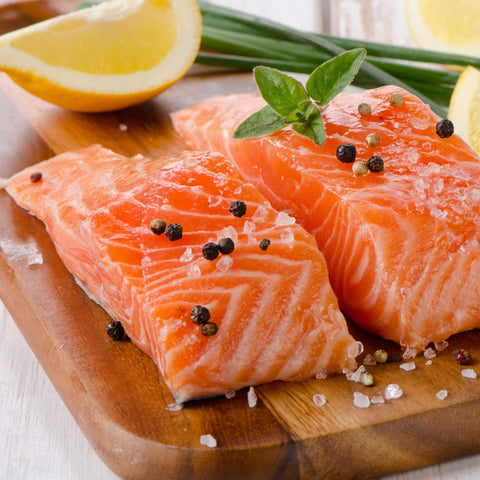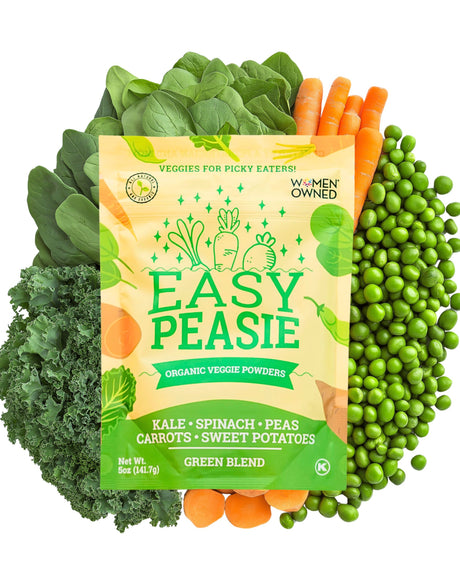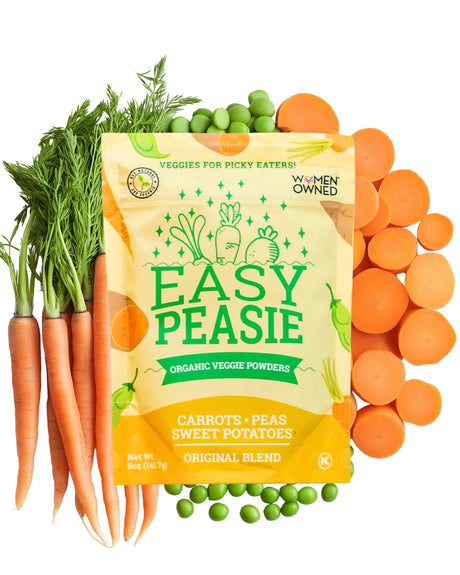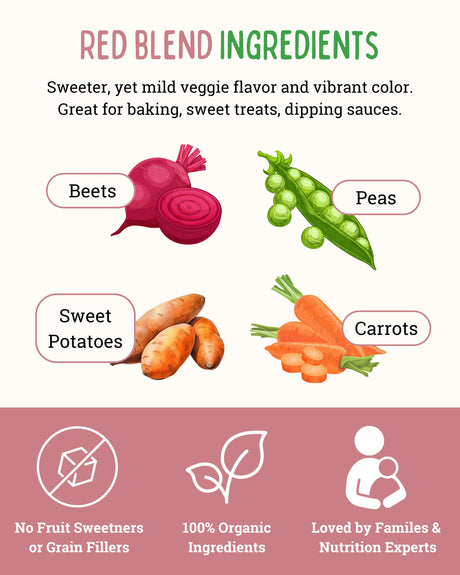Ensuring children receive adequate Vitamin D is crucial for their overall health and well-being. This essential nutrient plays a vital role in bone health, immune function, and overall growth and development.
In this blog, we'll explore a delicious and nutritious recipe featuring salmon, a natural source of Vitamin D. Salmon is not only packed with essential nutrients but also offers a delicious flavor that appeals to kids and adults alike.
By incorporating salmon into kids' diets, parents can boost their children's intake of Vitamin D and essential omega-3 fatty acids. These nutrients support brain development, immune function, and overall health, making salmon an excellent addition to any child's meal plan.
Join us as we dive into the details of this Vitamin D-rich salmon recipe and discover how it can benefit your child's health.
Understanding the Importance of Vitamin D for Kids
Role in Growth and Development
Vitamin D is essential for children's growth and development, playing a crucial role in bone health, immune function, and muscle strength. It helps regulate calcium and phosphorus absorption, which are vital for building and maintaining strong bones and teeth.
Sources of Vitamin D
While sunlight is a primary source of Vitamin D, dietary sources like fatty fish, fortified foods, and supplements also contribute to children's Vitamin D intake. Salmon, in particular, is an excellent natural source of Vitamin D, making it a valuable addition to children's diets.
Significance for Bone Health
Adequate Vitamin D intake is essential for optimal bone health, as it helps prevent conditions like rickets in children. It promotes calcium absorption, ensuring that bones grow strong and healthy. Insufficient Vitamin D can lead to weakened bones and an increased risk of fractures.
Nutritional Benefits of Salmon

Rich in Vitamin D
Salmon is prized for its high Vitamin D content, making it an excellent choice for boosting children's intake of this essential nutrient. A single serving of salmon provides a significant portion of the recommended daily allowance of Vitamin D, contributing to overall health and well-being.
Omega-3 Fatty Acids
In addition to Vitamin D, salmon is also rich in omega-3 fatty acids, particularly EPA (eicosapentaenoic acid) and DHA (docosahexaenoic acid). These fatty acids play a crucial role in brain development and function, promoting cognitive health and supporting a healthy nervous system in children.
Other Nutrients
Beyond Vitamin D and omega-3 fatty acids, salmon offers a host of other nutrients beneficial for children's health. It's an excellent source of high-quality protein, essential for muscle growth and repair. Additionally, salmon contains B vitamins like B12 and niacin, which play key roles in energy metabolism and overall vitality.
Kid-Friendly Salmon Recipe

Instructions
- Begin by preheating the oven to the specified temperature and preparing a baking dish lined with parchment paper.
- Season the salmon filets with a sprinkle of salt, pepper, and any desired herbs or spices.
- Place the seasoned salmon in the baking dish and drizzle with a bit of olive oil or melted butter.
- Bake the salmon in the preheated oven until it flakes easily with a fork, typically around 12-15 minutes, depending on the thickness of the filets.
Tips for Selecting and Storing Fresh Salmon
When selecting fresh salmon, look for filets that are firm to the touch and have a vibrant pink or orange color. Avoid fish with any strong or "fishy" odors, as this may indicate that it's past its prime. Store fresh salmon in the refrigerator for up to two days or freeze it for longer-term storage.
When freezing salmon, wrap it tightly in plastic wrap or aluminum foil and place it in a freezer-safe bag to prevent freezer burn.
Ideas for Serving
To make the salmon more appealing to children, consider serving it alongside familiar and kid-friendly sides. Pair the Vitamin D-rich salmon with whole grain rice, steamed vegetables, or a colorful salad.
You can also incorporate the salmon into fun and creative dishes like salmon tacos, salmon sushi rolls, or salmon pasta primavera. By presenting the salmon in different ways, you can pique your child's interest and encourage them to try this nutritious and delicious fish.
Creative Ways to Serve Salmon
Exploring Different Cooking Methods
Salmon is incredibly versatile and can be prepared using various cooking methods to suit different tastes and preferences. Grilling salmon imparts a smoky flavor and crispy texture, while baking it in the oven retains its moisture and tenderness.
Pan-searing salmon creates a golden crust on the outside while keeping the flesh moist and flavorful. Experiment with different cooking techniques to discover your child's favorite way to enjoy salmon.
Recipe Variations and Flavoring Options
Keep mealtime exciting by trying out different recipe variations and flavoring options for salmon. For a kid-friendly twist, coat salmon filets in a mixture of breadcrumbs and Parmesan cheese before baking for a crispy crust.
Alternatively, marinate salmon in a sweet and tangy teriyaki sauce or a zesty lemon and herb marinade. Encourage your child to explore different flavors and seasonings to find their perfect salmon dish.
Suggested Side Dishes and Accompaniments
Pairing salmon with delicious side dishes and accompaniments can enhance the overall dining experience. Serve grilled or baked salmon with a side of roasted vegetables, such as asparagus, broccoli, or sweet potatoes, for added nutrition and flavor. Fresh salads with leafy greens, cherry tomatoes, and avocado complement salmon beautifully and provide a refreshing contrast.
Consider also serving salmon with whole grain couscous, quinoa, or rice pilaf to round out the meal with wholesome grains. By incorporating a variety of side dishes and accompaniments, you can create a balanced and satisfying meal centered around nutritious salmon.
Getting Kids Involved in Cooking
Discussing the Benefits: Getting kids involved in cooking can have numerous benefits for their overall well-being. Not only does it teach them valuable life skills, but it also promotes a positive relationship with food and encourages them to try new flavors and ingredients. Cooking together as a family creates lasting memories and fosters a sense of teamwork and accomplishment.
Age-Appropriate Tasks
When cooking salmon, there are plenty of age-appropriate tasks that children can help with in the kitchen. Younger children can assist in washing and patting dry salmon fillets, while older kids can learn to season the fish with herbs and spices. They can also help in setting the table, arranging side dishes, and garnishing the finished dish with fresh herbs or lemon slices.
Teaching Healthy Eating Habits
Cooking time teaches children about the importance of making nutritious choices, such as salmon. It exposes them to different foods and discusses health benefits like omega-3 fatty acids and Vitamin D.
Encouraging children to ask questions and explore new foods empowers them to make informed decisions about their diet, setting them up for a lifetime of balanced nutrition.
Addressing Picky Eating

Strategies for Encouraging New Foods
When it comes to introducing salmon to picky eaters, it's essential to approach it with patience and creativity. Start by offering small portions alongside familiar foods, gradually increasing exposure over time.
Get children involved in meal preparation, allowing them to choose ingredients and participate in cooking. Offering praise and positive reinforcement for trying new foods can also help build confidence and curiosity.
Making Salmon Appealing
To make salmon more appealing to picky eaters, consider presenting it in different forms and flavors. Try incorporating salmon into kid-friendly dishes like salmon nuggets, fish tacos, or salmon patties.
Experiment with different seasonings, sauces, and cooking methods to find what resonates best with your child's palate. Offering a variety of side dishes and accompaniments can also make the meal more enjoyable and appealing.
Importance of Patience and Persistence
Introducing new foods, including salmon, to picky eaters requires patience and persistence. It's normal for children to resist unfamiliar foods at first, so don't be discouraged if they don't take to salmon right away. Keep offering it in different ways, and be patient as they gradually become more comfortable with it. Remember that every child is unique, and what works for one may not work for another. Stay consistent, stay positive, and celebrate small victories along the way.
Tips for Buying and Storing Salmon
Guidance on Selecting Fresh Salmon
When purchasing salmon, look for filets or steaks with firm, moist flesh and a mild aroma of the sea. Avoid fish with strong, fishy odors or signs of discoloration. If possible, buy salmon from reputable sources that prioritize sustainable and responsibly sourced seafood.
Additionally, consider opting for wild-caught salmon when available, as it tends to have a richer flavor and higher nutritional value compared to farmed varieties.
Properly Storing Salmon
To maintain the freshness and quality of salmon, it's essential to store it correctly. If not cooking immediately, store fresh salmon in the coldest part of the refrigerator, preferably wrapped tightly in plastic wrap or aluminum foil.
Alternatively, place the salmon in an airtight container or resealable plastic bag before refrigerating. Consume fresh salmon within 1-2 days of purchase for optimal taste and texture.
Exploring Frozen Salmon Options
Frozen salmon can be a convenient and economical choice, especially if fresh options are limited. When buying frozen salmon, choose products that are individually wrapped and free from freezer burn.
Thaw frozen salmon safely in the refrigerator overnight or under cold, running water. Once thawed, cook the salmon promptly and avoid refreezing to preserve its quality and nutritional content.
Benefits of Including Salmon in Kids' Diets

Recap of Nutritional Benefits
Salmon is a nutritional powerhouse, packed with essential nutrients that support children's growth and development. It's an excellent source of high-quality protein, omega-3 fatty acids, and B vitamins, all of which play vital roles in maintaining overall health.
Additionally, salmon is rich in Vitamin D, a nutrient crucial for bone health, immune function, and optimal growth in children.
Importance of Vitamin D-Rich Foods
Vitamin D deficiency is a common concern among children, especially those who spend limited time outdoors or live in regions with minimal sunlight exposure. Including Vitamin D-rich foods like salmon in kids' diets can help meet their daily requirements and support healthy bone development. By regularly consuming salmon, children can benefit from the natural source of Vitamin D it provides, helping to strengthen their bones and support immune function.
Encouragement for Parents
As parents strive to provide the best nutrition for their children, incorporating salmon into their diets can be a simple yet effective way to boost their overall health.
By trying out the vitamin D-rich salmon recipe provided, parents can introduce a delicious and nutritious food option that appeals to children's taste buds while also prioritizing their nutritional needs. Making salmon a regular part of kids' diets can set them on the path to lifelong health and wellness.
Summary
In this blog, we've explored the importance of Vitamin D for children's health and the numerous benefits of including salmon in their diets. We've highlighted how salmon serves as an excellent source of Vitamin D, omega-3 fatty acids, protein, and B vitamins, all of which are essential for children's growth, development, and overall well-being.
By incorporating Vitamin D-rich foods like salmon into kids' meals, parents can help ensure that their children receive the nutrients they need for optimal health.
Encouragement for Parents
As parents, it's essential to prioritize our children's nutrition and provide them with wholesome foods that support their growth and development. By making the Vitamin D-rich salmon recipe a regular part of their meals, parents can introduce a delicious and nutritious option that kids will love.
Not only does salmon offer a wide range of health benefits, but it's also versatile and easy to prepare, making it a convenient choice for busy families. Let's empower our children to thrive by nourishing them with nutrient-rich foods like salmon, setting them on the path to lifelong health and wellness.
Leave your comments below; we love to hear from you! And don't forget to follow EasyPeasie for more veggie info and convo on YouTube, Facebook, and Instagram! ~ThePeas













